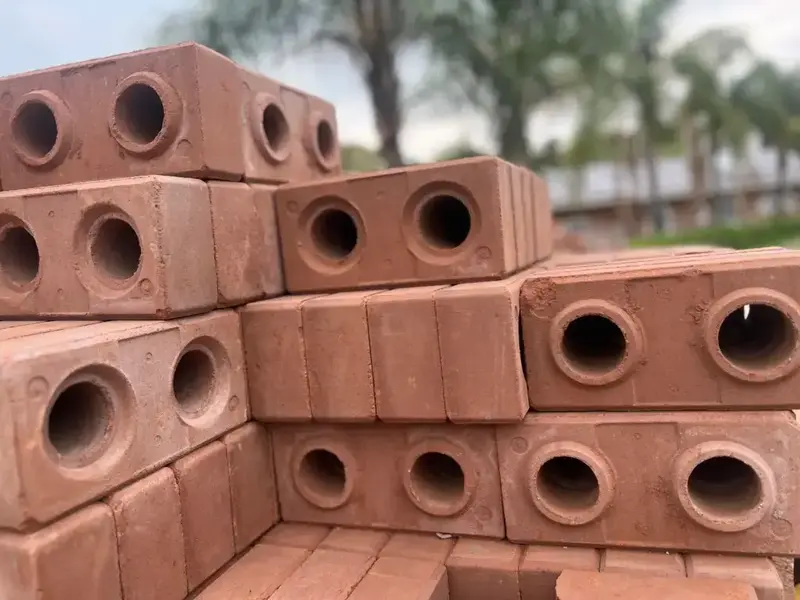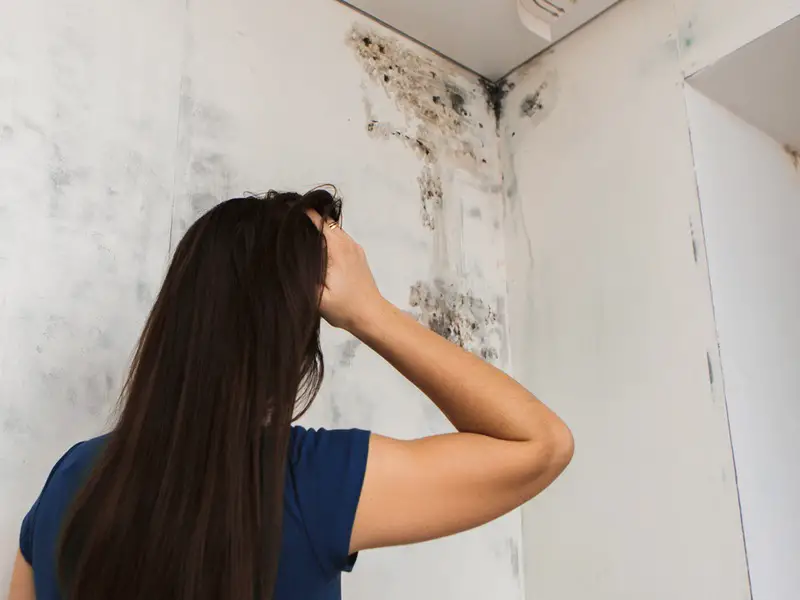Sustainable architecture is all about using environmentally-friendly practices and materials in building design and construction. One aspect of this is the use of eco-friendly paints, which are made from natural and non-toxic ingredients. In this article, we will explore what eco-friendly paints are, their benefits, and how they can be used in sustainable architecture.
What are Eco-Friendly Paints?
Eco-friendly paints are a type of paint that is designed to be better for both the environment and human health. They are made from natural and non-toxic materials, which makes them safer for people who use them and for those who are exposed to them once they have been applied. Traditional paints can contain harmful chemicals that can off-gas and cause health problems such as headaches, dizziness, and respiratory issues. These chemicals are known as volatile organic compounds (VOCs), and they can be released into the air for years after the paint has been applied.
In contrast, eco-friendly paints are free of VOCs, which means that they are much safer for people to use. They are also biodegradable, which means that they can be disposed of without causing harm to the environment. This is important because traditional paints can contain toxic chemicals that can be harmful to plants, animals, and ecosystems.
There are several different types of eco-friendly paints available on the market today. Some are made from natural materials such as clay, milk, and natural pigments, while others are made from recycled materials such as glass or plastic. Some eco-friendly paints are also designed to be more durable and longer-lasting than traditional paints, which can help to reduce the need for frequent repainting and the associated waste.

Benefits of Eco-Friendly Paints
There are many benefits to using eco-friendly paints in sustainable architecture. Firstly, they are better for the environment and human health. Traditional paints release VOCs, which can contribute to air pollution and respiratory problems. Eco-friendly paints do not contain these harmful chemicals, making them a safer and healthier option.
Secondly, eco-friendly paints are more sustainable than traditional paints. They are often made from renewable resources, such as plant-based oils, and can be biodegraded, reducing their impact on the environment. This makes them a more sustainable choice for sustainable architecture.
Finally, eco-friendly paints can be more durable and longer-lasting than traditional paints. They are less likely to fade or discolor over time and can withstand harsh weather conditions better. This means that they require less maintenance and can save money in the long run.
Common Ingredients in Eco-Friendly Paints
Eco-friendly paints are made from a variety of natural and non-toxic ingredients. Some common ingredients include:
- Water
- Plant-based oils, such as linseed oil and soybean oil
- Natural pigments, such as clay and chalk
- Essential oils, such as lavender and citrus
- Milk proteins, such as casein
These ingredients are often combined in different ratios to create different types of eco-friendly paints.
How to Identify Eco-Friendly Paints
Not all paints that claim to be eco-friendly are created equal. To identify truly eco-friendly paints, look for the following characteristics:
- Low or no VOC content
- Biodegradable or compostable
- Made from natural or renewable materials
- Recyclable packaging
Some eco-friendly paints may also be certified by third-party organizations, such as Green Seal or the Environmental Protection Agency (EPA).
Types of Eco-Friendly Paints
There are several types of eco-friendly paints available, each with its own unique properties and applications. Some common types include:
- Milk paint: made from milk proteins and natural pigments, milk paint has been used for centuries and is known for its durability and versatility. It is often used in historical restoration projects and can create a rustic or antique look.
- Clay paint: made from natural clay, clay paint is breathable and can help regulate humidity in a room. It is also mold-resistant and can be used in bathrooms and other damp areas.
- Low-VOC paint: while not completely eco-friendly, low-VOC paints have significantly reduced VOC content compared to traditional paints. They are widely available and can be a good option for those looking to make a small change in their home.
- Recycled paint: made from leftover paint that has been collected and reprocessed, recycled paint is a more sustainable option than traditional paint. However, its quality and color can be inconsistent.
Applications of Eco-Friendly Paints
Eco-friendly paints have a wide range of applications and can be used in many different contexts. One of the most common applications for eco-friendly paints is on interior walls. These paints are a great choice for homes, schools, and other indoor spaces where air quality is a concern. Eco-friendly paints are free of VOCs and other harmful chemicals, which means that they are much safer for people to use and can help to improve indoor air quality.
Another common application for eco-friendly paints is on furniture. Eco-friendly paints can be used to refinish old furniture or to create custom pieces. They come in a wide range of colors and finishes, so it is easy to create a look that is both stylish and eco-friendly. Many eco-friendly paints are also very durable, which means that they can stand up to the wear and tear of daily use.
Eco-friendly paints can also be used on outdoor surfaces, such as decks, fences, and siding. These paints are designed to be weather-resistant and can stand up to the elements without deteriorating or fading. They are also safer for the environment than traditional paints, which can contain chemicals that can leach into the soil or water.
In addition to these applications, eco-friendly paints can also be used on unconventional surfaces, such as metal or concrete. Some eco-friendly paints are specifically designed for these surfaces and can provide a durable and long-lasting finish. These paints can be used in a variety of settings, from industrial facilities to public art installations.
Best Practices for Using Eco-Friendly Paints
When using eco-friendly paints, it is important to follow best practices to ensure their effectiveness and longevity. Some tips include:
- Proper surface preparation, including cleaning and priming
- Using the correct tools, such as natural bristle brushes or rollers made from recycled materials
- Applying thin, even coats to avoid drips and brush strokes
- Allowing ample drying time between coats
- Avoiding painting in extremely hot or cold temperatures, which can affect the paint’s performance
Eco-Friendly Paints in Sustainable Architecture
Eco-friendly paints play a crucial role in sustainable architecture. One of the primary benefits of these paints is that they are free of harmful chemicals, such as VOCs, which can have negative impacts on indoor air quality. When used in buildings, eco-friendly paints can help to reduce the levels of pollutants and improve the health and comfort of occupants. This is particularly important in homes, schools, and other buildings where people spend a significant amount of time.
In addition to promoting better indoor air quality, eco-friendly paints also contribute to sustainable architecture by reducing waste and pollution. Many traditional paints contain toxic chemicals that can leach into the soil and water, causing harm to the environment. Eco-friendly paints, on the other hand, are made from natural and renewable materials and are biodegradable, which means they can be disposed of without causing harm to the environment.
Another benefit of eco-friendly paints in sustainable architecture is that they promote the use of renewable resources. Many of these paints are made from plant-based materials, such as soy or linseed oil, which can be grown and harvested in a sustainable manner. This helps to reduce our dependence on non-renewable resources and supports a more sustainable way of life.
Finally, eco-friendly paints can also contribute to the aesthetic appeal of sustainable architecture. These paints come in a wide range of colors and finishes, which means that architects and builders have a lot of options when it comes to creating beautiful, environmentally responsible buildings. Whether it’s a sleek modern design or a more traditional style, eco-friendly paints can help to create a look that is both stylish and sustainable.
Case Studies of Eco-Friendly Paints in Sustainable Architecture
Several buildings around the world have incorporated eco-friendly paints into their design. One notable example is the Bullitt Center in Seattle, which is considered the greenest commercial building in the world. The Bullitt Center uses only non-toxic materials, including eco-friendly paints, and has achieved a net-zero energy usage.
Another example is the Google Headquarters in California, which used eco-friendly paints to create vibrant and colorful interiors. The eco-friendly paints were used in combination with other sustainable materials, such as recycled carpet and bamboo flooring.
Eco-Friendly Paints vs Traditional Paints: A Comparison
When it comes to choosing between eco-friendly paints and traditional paints, there are some key differences to consider. One of the most significant differences is the composition of the paints themselves. Eco-friendly paints are made from natural and non-toxic materials, while traditional paints often contain synthetic chemicals, such as VOCs.
One advantage of eco-friendly paints is that they have a lower impact on indoor air quality. Traditional paints can release harmful chemicals into the air during application and even after they have dried, which can lead to health problems for occupants. Eco-friendly paints, on the other hand, are free of these chemicals and can help to promote better indoor air quality.
Another benefit of eco-friendly paints is that they can be more durable than traditional paints. They often have a longer lifespan and can resist wear and tear more effectively, which means they may not need to be replaced as frequently. This can help to reduce waste and lower the overall cost of maintenance over time.
However, it’s important to note that there may be some trade-offs when it comes to using eco-friendly paints. For example, they may have a higher upfront cost than traditional paints, which can be a barrier for some consumers. Additionally, their application may require more time and effort, as they may need to be applied in multiple coats or with specific techniques.
Despite these potential drawbacks, many architects and builders are choosing to use eco-friendly paints in their projects due to their long-term benefits. By promoting better indoor air quality, reducing waste and pollution, and supporting the use of renewable resources, eco-friendly paints can contribute to a more sustainable and environmentally responsible built environment.
Cost Considerations of Eco-Friendly Paints
The cost of eco-friendly paints can vary depending on the brand and type of paint. In general, natural paints that are made from ingredients like clay, plant extracts, and minerals may be more expensive than traditional paints made from synthetic chemicals. However, many eco-friendly paints are becoming more widely available and their cost is decreasing as more people become interested in sustainable building practices.
Despite potentially higher upfront costs, eco-friendly paints can be a better investment in the long run. They often have a longer lifespan and can resist wear and tear more effectively, which means they may not need to be replaced as frequently. This can help to reduce maintenance costs over time and ultimately lower the overall cost of the project.
It’s important to consider the cost of eco-friendly paints as part of the overall budget for sustainable architecture. While they may be more expensive than traditional paints, the environmental and health benefits can make them a worthwhile investment. By prioritizing sustainability in the design and construction process, architects and builders can create buildings that are not only aesthetically pleasing, but also environmentally responsible and cost-effective in the long run.
Limitations of Eco-Friendly Paints
Although eco-friendly paints have many advantages, there are also limitations to their use. One of the limitations of eco-friendly paints is that they may not be suitable for certain applications. For instance, some eco-friendly paints may not be appropriate for outdoor use, as they may not be able to withstand harsh weather conditions. Similarly, in high-traffic areas, eco-friendly paints may wear out more quickly than traditional paints, which can be a concern for those who want to maintain the appearance of their surfaces.
Another limitation of eco-friendly paints is that their color selection may be more limited than traditional paints. This can be a challenge for those who are looking for a specific color or shade, especially if they need to match existing paint or décor. However, this is gradually changing as more manufacturers are introducing a wider range of colors for eco-friendly paints.
It is important to understand these limitations when considering the use of eco-friendly paints in sustainable architecture. By carefully evaluating the intended use and selecting the appropriate eco-friendly paint product, architects and builders can overcome these limitations and create sustainable and environmentally responsible buildings.
DIY Eco-Friendly Paints: Recipes and Tips
DIY eco-friendly paints are a popular option for those who are looking to save money and reduce their environmental impact. Making your own paint can be a fun and creative project, and there are many recipes and tips available online to help you get started.
One common recipe for DIY paint involves mixing natural pigments, such as clay or chalk, with a binder such as flour or milk. The ratio of pigment to binder can vary depending on the desired consistency and color. For example, mixing clay with water can create a thick paste that can be used as a base for paint. Adding milk or flour can help to create a smoother consistency and improve adhesion to surfaces.
Another option for DIY paint is using plant-based dyes, such as beet juice or turmeric, as the pigment. These dyes can be mixed with a binder such as gum arabic or egg yolk to create a colorful and eco-friendly paint.
When making your own paint, it is important to consider the durability and longevity of the paint. DIY paints may not be as durable as commercially available eco-friendly paints, and may not hold up as well in high-traffic areas or outdoor applications. It is also important to follow safety precautions when working with natural pigments and binders, such as wearing gloves and a mask to avoid inhalation of dust.
Conclusion
Eco-friendly paints are a key component of sustainable architecture, offering many benefits over traditional paints. They can improve indoor air quality, reduce waste and pollution, and promote the use of renewable resources. When using eco-friendly paints, it is important to follow best practices to ensure their effectiveness and longevity. While they may have a higher upfront cost, their long-term benefits can make them a worthwhile investment in sustainable architecture.




